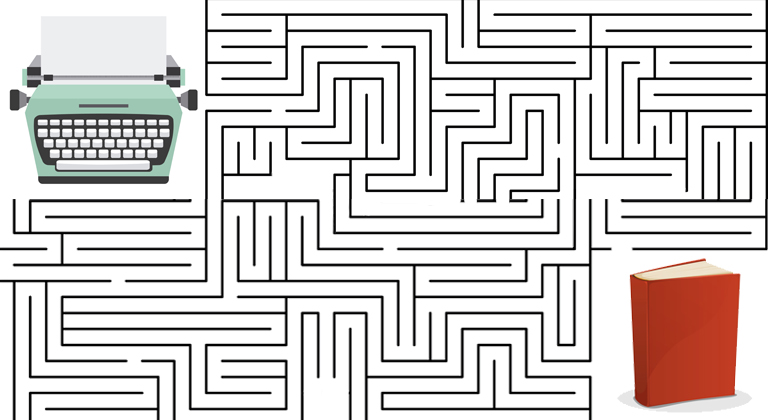Using Dialogue to Drive Your Story
Using dialogue properly in your novel is one of the most important things you need to get right, yet is one of the things that so many authors get wrong, or at least struggle with. Back when I first started writing seriously, I read a couple of books on dialogue specifically, and they helped me immensely. But you can gain just as much by simply studying some of the greats, and how they structure the conversations between their characters. That’s exactly what Ginger is looking at today, with a few examples from timeless classics. In a large part, these authors and books are still widely read because they were able to nail their own dialogue so effectively.
Some of the most timeless writers of our age remain that way because of their dynamic use of dialogue.
Certain writers remain as relevant today as they did when their books were first published – and when it comes to authors like Ernest Hemingway, that’s quite a remarkable thing. One of Hemingway’s most popular books, A Farewell To Arms, is a perfect example – published in 1929 it still remains as easy to read and vividly immersive today as it was back then.
Jane Austen is another example. Although it was originally published in 1813 – a staggering 209 years ago – Pride and Prejudice remains the quintessential romance novel and still captures the hearts and imaginations of first-time readers.
In both cases, the reason for the timeless nature of these books is dialogue. Both Hemingway and Austen were masters of realistic, fast-flowing dialogue that helped drive each story along at a pace even modern, impatient readers can still appreciate.
Aspiring authors can learn a lot by following the example of these two brilliant authors. Dialogue is one of the most powerful tools you have in your writer’s arsenal – able to deliver characterization and drive the plot along much faster and more effectively than purely descriptive passages can.
A good example from A Farewell To Arms is this brief snippet – in which the protagonist Frederic Henry tries desperately to kiss English nurse Catherine.
I wanted to kiss her.
“No,” she said. “I’m awfully tired.”
“Kiss me, though,” I said.
“I’m awfully tired, darling.”
“Kiss me.”
Despite being written nearly a century ago, you’ll notice that Hemingway delivers each line of dialogue like a boxer might deliver punches. There are only two times he specifies which character is speaking – otherwise letting each line break demonstrate that the same way a tennis ball might bounce back and forth between two players.
The exceptions are important, though. When Hemingway tells us “she said” it’s to break up a single line of Catherine’s dialogue – making the reader acknowledge a pause in her speaking that suggests hesitation (which, in itself, suggests that she’s reluctant.) In the next line, Hemingway uses “I said” to both reiterate the fact that it’s Henry speaking once again, but also to suggest the insistence of his demand.
Other than that, though, it’s up to the reader to figure out which character is speaking each line of dialogue – which isn’t a problem because Hemingway made it pretty simple for us. Therefore he spares us line after line of “he said” and “she said” and condenses a lot into just a few, brief sentences.
At the time of publication, this was actually quite an unusual style of writing. If you look at other books written during the first half of the 20th century, you’ll often find dialogue is heavily accessorized by narrative (such as “he said angrily” or “she said, turning her face away.”) Readers from that period were a lot more lenient toward more wordy books – but it’s worth noting that the ones which seem to have best stood the test of time are the ones that employ the same economy of words as Hemingway did.
Perhaps it’s because modern readers have shorter attention spans – or are more used to figuring out the “he said” and “she said” almost as if the back and forth of dialogue is laid out like a series of text messages. In any event, I think most people would agree that the reason Hemingway’s books remain so readable today is precisely because he trimmed all extraneous words and distilled his dialogue into its purest form.
Somewhat remarkably, though, Jane Austen was pulling this same trick nearly a century before Hemingway was even born – and those of you who’ve read Pride and Prejudice might be nodding your head as you read this, remembering the concise, fast-paced way in which Austen included dialogue in her stories.
When Elizabeth and Mr. Darcy are dancing at the ball, for example, there’s this exchange which is similarly notable for how sharply edited and lean it is.
“That is exactly what I should have supposed of you,” said Elizabeth.
“You begin to comprehend me, do you?” cried he, turning towards her.
“Oh! yes—I understand you perfectly.”
“I wish I might take this for a compliment; but to be so easily seen through I am afraid is pitiful.”
“That is as it happens. It does not necessarily follow that deep, intricate character is more or less estimable than such a one as yours.”
Now, obviously this is slightly more flowery language – few of us use the word ‘estimable’ as frequently as Elizabeth Bennet does – but you’ll notice the same lack of attributions (which are the “he said” and “she said” bits.)
Just like with Hemingway, Jane Austen used each separate line to explain which character was speaking (starting with “said Elizabeth” so we’d know where to begin) and only added “cried he” so that readers would know how Mr. Darcy was uttering his words; simultaneously revealing the emotions behind them.
Yet while Jane Austen was showing us all how it should be done 209 years ago, one of the most repeated and common mistakes aspiring authors still make is to bulk out their dialogue with attributions (“he said”) and adverbs (“she said happily”) and therefore make the books much longer and slower-paced than they need to be.
So, take some advice from these masters of their craft and pay some careful attention to the dialogue in your own fiction – especially during the editing process. Dialogue offers the best opportunity to sharpen your prose, trim your wordcount, and advance your story – all accomplished by eliminating what’s unnecessary and emphasizing what’s vital.
I truly believe focusing attention on this aspect specifically – the dialogue between your characters – is what can take your writing to the next level; and it’s a belief that seems to be validated by the writers who’ve remained relevant even centuries after their words were first committed to print.












1 Comments